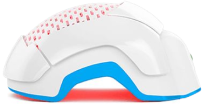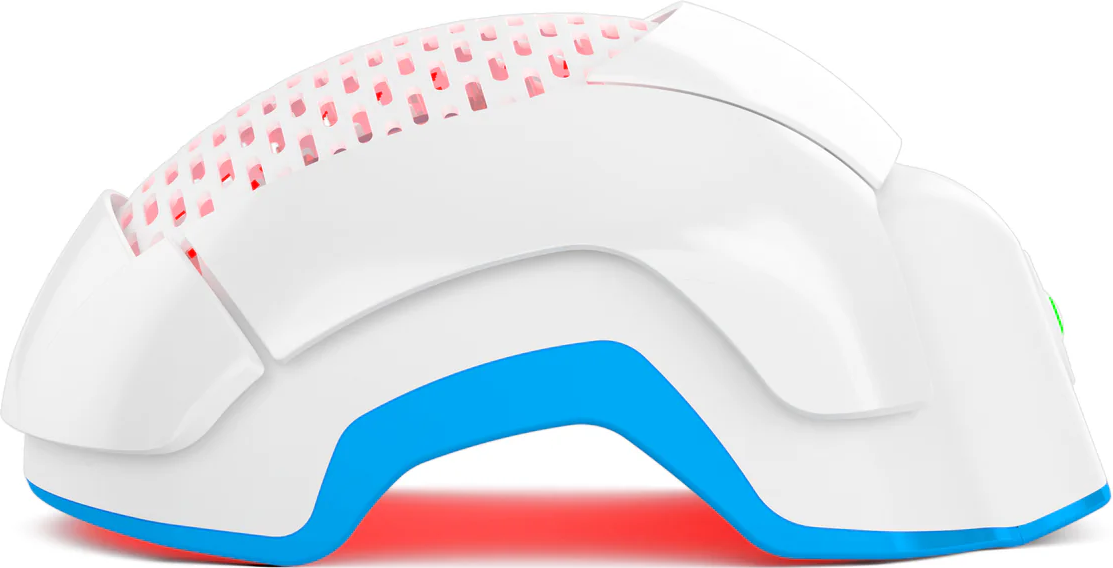Most people don’t lose their hair overnight—they just don’t notice when a headful quietly becomes a handful.
Here’s what usually happens: a little extra in the brush, a drain that clogs a bit faster, maybe a ponytail that feels skinnier than usual. And just like that, denial sets in. “It’s seasonal,” “It’s stress,” “It’s fine.” Until it’s not.
The problem is, most people don’t actually know what they’re looking at—or losing. The difference between headful vs handful hair isn’t just how much ends up in your palm. It’s a deeper sign of what’s happening at the scalp level, and spoiler: it’s not always just "natural shedding."
We’re cutting straight through the fluff and the internet’s myths. Here are the five major differences between headful and handful hair—and why getting them wrong is more common (and costly) than you think.
1. Volume and Density
Let’s not confuse "poofy" with "plenty." A headful of hair simply means more strands per square inch — full coverage, minimal scalp glare, and actual weight to your ponytail. You’re not just styling hair, you’re styling a lot of it.
Now, if your hair has started to feel more like a gentle breeze than a breeze-block, you’re likely dealing with the “handful” end of the scale. That limp, airy vibe? Not a trend. It’s what happens when your hair density dips, either slowly or all at once. And let’s be clear: hair shedding vs. hair loss isn’t the same thing. Losing some strands daily? Normal. Watching your crown thin out like over-plucked brows? That’s your cue to stop brushing it off — literally.
2. Hair Strength and Thickness
Strong hair doesn't snap in the shower. It doesn’t beg for mercy every time you run a comb through it. A proper headful of hair comes with strands that can actually hold their own — thicker shafts, stronger cuticles, less breakage drama. It’s not magic; it’s structure.
But if you’re finding broken bits everywhere and your strands feel more like threads than hair, we’re talking about something else. Fine hair vs. thin hair gets mixed up way too often. Fine hair can still be dense. Thin hair? That’s where strand strength and numbers both let you down. The breakage isn't just annoying — it’s part of the thinning cycle that snowballs fast if you don’t get in front of it. Look, your flat iron isn't helping.
3. Hair Scalp Visibility
When your scalp is minding its business, you shouldn’t be seeing it. A real headful of hair keeps it respectfully covered. No glare. No shining through. Just strands doing their job.
Now, if your part line looks like a runway and your crown’s giving off a little too much glow, you’re probably in handful territory. And it can be an early sign of pattern thinning or disrupted hair growth cycle stages. In fact, studies show that increased scalp visibility often precedes clear loss in androgenetic alopecia in women — long before the shedding gets obvious. It’s not about obsessing over mirrors. It’s about knowing when your follicles are quietly clocking out.
4. Maintenance and Care Routines
Having a headful of hair sounds great — until you wash it, dry it, and try to keep it from turning into a nest. Dense hair needs a strategy. Skip the heavy creams unless you’re into build-up. Use lightweight, hydrating formulas and frizz control that doesn’t weigh your roots down.
Bonus: your scalp still needs attention, especially if you're stretching wash days.
On the other side of the fence, a handful of hair needs a completely different playbook. You’re working with fragile territory, so the focus shifts to lifting, stimulating, and protecting. That means utilizing volumizing washes and hair thinning treatments that keep your scalp on its A-game. If your loss has anything to do with telogen effluvium causes like stress or illness, or if you’re navigating postpartum hair loss, your routine needs to support regrowth — not just style what's left.
5. Hair Health and Growth Patterns
Healthy hair doesn’t just hang in there — it grows like it means it. When your follicle cycle is working properly, about 90% of your strands are in the growth phase. That’s how a true headful of hair maintains its shape, volume, and density over time. It grows evenly, sheds normally, and comes back without begging.
But when you’re on the handful side of things, things start to skew. More strands fall into the resting or shedding phases than they should. Common causes of this include seasonal shedding, stress-related hair loss, or the gradual onset of permanent thinning. And when your regrowth can’t keep up? You don’t just lose hair. You lose ground. Add nutritional deficiencies and hair health to the list, and your follicles are now underfed, underperforming, and looking for early retirement.
Conclusion
Headful vs handful hair isn’t about drama — it’s biology, plain and measurable. A headful has the numbers, the strength, and the coverage. A handful signals shedding, thinning, or a growth cycle that’s fallen off the rails.
Improving hair density and strength starts with nailing the basics: consistent scalp care, friction-free styling, a diet that doesn’t skip the iron and protein, and yes, ditching myths for methods that actually work. Clinically backed options like laser hair helmets and regular scalp massages stimulate follicles where they count. Don’t wait for the mirror to shout. Subtle signs are loud enough if you’re listening.






















